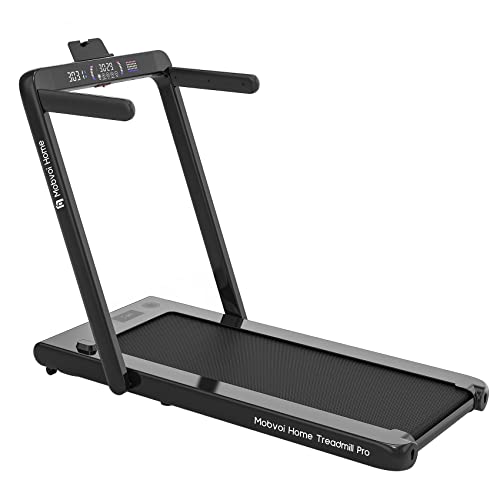
Treadmills Electric
Add a review FollowOverview
-
Founded Date March 27, 1924
-
Posted Projects 0
-
Viewed 20
Company Description
14 Savvy Ways To Spend The Remaining Tread Mill Budget
Treadmills: A Comprehensive Guide to Understanding Their Functionality, Benefits, and Appropriate Selection
Intro
Treadmills have become a staple in contemporary fitness routines, both in homes and health clubs worldwide. They provide a practical and efficient way to keep cardiovascular health, increase endurance, and help in weight management. This short article checks out the different types of treadmills, their advantages, functions to think about when buying, and some FAQs to assist users in making notified choices.
Types of Treadmills
When it comes to selecting a treadmill, it is crucial to understand the different types readily available in the market. Here are the main categories:

1. Handbook Treadmills
- Mechanism: These treadmills have a simple style and depend on the user’s efforts to move the belt.
- Pros: More economical, quieter operation, no electricity needed.
- Cons: Limited features, may not offer the very same range of workout intensity.
2. Motorized Treadmills
- Mechanism: Powered by a motor that drives the belt, allowing users to walk or run at a set pace.
- Pros: Greater range of speeds and slopes, geared up with many features such as heart rate monitors and workout programs.
- Cons: More costly and may require more upkeep.
3. Folding Treadmills
- Mechanism: Designed for those with minimal space, these treadmills can be folded for easy storage.
- Pros: Space-saving, typically motorized, versatile functions.
- Cons: May be less durable than non-folding models.
4. Business Treadmills
- System: High-quality machines created for usage in fitness centers and physical fitness centers.
- Pros: Built to hold up against heavy usage, advanced features, frequently include service warranties.
- Cons: Pricey and not perfect for home usage due to size.
5. Curved Treadmills
- Mechanism: A special style that allows users to propel the belt using their own energy.
- Pros: Offers a more natural running experience, promotes much better running kind.
- Cons: More pricey and can be noisier.
| Treadmill Type | Pros | Cons |
|---|---|---|
| Manual | Budget friendly, no electricity needed | Limited features |
| Motorized | Range of speeds, advanced functions | Upkeep needed |
| Folding | Space-saving, frequently motorized | May lack toughness |
| Industrial | Developed to last, professional-grade features | Pricey |
| Curved | Natural running experience, promotes great form | Greater cost |
Advantages of Using Treadmills
Treadmills offer various advantages that can contribute to one’s general health and wellness goals. A few of these advantages consist of:
- Convenient Workouts: Treadmills enable users to exercise indoors despite weather condition conditions.
- Cardiovascular Health: Regular usage can improve heart health by increasing stamina and promoting healthy circulation.
- Weight Management: Effective for burning calories, which aids in weight loss and management.
- Customizable Workouts: Users can control speed, incline, and duration to produce individualized workout experiences.
- Security: Treadmills supply a predictable surface area, lowering the danger of falls compared to outside running.
- Multifunctional: Many treadmills featured features like heart rate screens, workout programs, and even home entertainment systems.
Choosing the Right Treadmill
When choosing a treadmill, potential buyers should think about numerous crucial elements:
Features to Consider:
- Motor Power: Typically measured in horse power (HP), a motor strength of at least 2.5 HP is recommended for major runners.
- Belt Size: A longer and larger belt accommodates various stride lengths, providing convenience during workouts.
- Slope Settings: Adjustable incline functions mimic outdoor hill running and can increase workout intensity.
- Weight Capacity: Ensure the treadmill can support the user’s weight for safety and longevity.
- Console Features: Look for easy to use control panels, workout programs, and Bluetooth compatibility for streaming music or other functions.
Budget Considerations
- Under ₤ 500: Entry-level manual treadmills suitable for casual walkers.
- ₤ 500 – ₤ 1,500: Mid-range motorized treadmills that provide more functions and better durability.
- ₤ 1,500 – ₤ 3,000: High-end designs with advanced innovation, larger motors, and longer guarantees.
- Over ₤ 3,000: Commercial-grade treadmills perfect for frequent use in fitness centers or training facilities.
Frequently Asked Questions (FAQs)
1. How typically should I use a treadmill?
It is advised to utilize a treadmill a minimum of three to 5 times a week, incorporating different intensity levels for best at Home treadmill results.
2. Can I reduce weight by utilizing a treadmill?
Yes, consistent use of a treadmill can add to weight reduction, specifically when combined with a balanced diet plan and strength training.
3. What is the best speed to walk on a treadmill for newbies?
A speed of 3 to 4 miles per hour is a suitable range for newbies. It’s important to start sluggish and slowly increase speed as convenience and stamina enhance.
4. Do I need to use a treadmill if I already run outdoors?
Utilizing a treadmill can supply fringe benefits, such as regulated environments and differed exercises (incline, intervals) that are not always possible outdoors.
5. How do I keep my treadmill?
Regular maintenance includes lubricating the belt, cleaning the deck and console, and examining the motor for ideal performance.
Treadmills are important tools for those wanting to improve their fitness levels in a controlled and hassle-free manner. With different types available, comprehending their features and benefits is important for making a notified purchase. By thinking about individual workout needs, space accessibility, and budget restrictions, individuals can find the most ideal treadmill that fits their way of life. Integrating treadmill workouts into a well balanced fitness regimen can result in better health outcomes and a pleasurable exercise experience.
